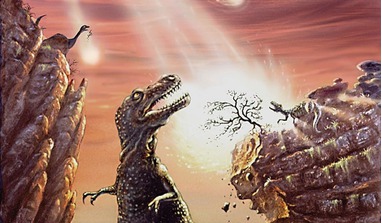 Issue #4(6) 2015
Issue #4(6) 2015
Comets and asteroids colliding with Earth pose a serious threat to humanity yet we lack effective means to discover themand alert the public to imminent dangers. Even the impact of a small celestial body may lead to serious loss of life, sigificant material and ecological damage
 Issue #4(6) 2015
Issue #4(6) 2015
The popular press often propagates the notion that Jupiter has a profound role in shielding Earth and the terrestrial planets from impacts and the question of whether such observed impacts were ever Earth-threatening in the first place has gone largely unchallenged until now.
 Issue #4(6) 2015
Issue #4(6) 2015
Artistic research is becoming a research area in its own right, creating a loop of connectivity between artistic research, space research, applications and terrestrial implementations.
 Issue #4(6) 2015
Issue #4(6) 2015
Women are playing a more active role in human space exploration and in the Luna-2015 (Moon-2015) project, a nine-day isolation experiment involving only women, they participated in a simulated flight to the Moon.
 Issue #4(6) 2015
Issue #4(6) 2015
October 2015 marked the 20th anniversary of the first generally accepted detection of a planet orbiting a Sun-like star beyond our Solar System, giving rise to a new class of planet - a 'Hot Jupiter'. It is now one of the dominant types of planet found by spacecraft such as Kepler.
A Danish chef famed for his creativity and daring approach to food was asked to come up with a special menu for the orbiting International Space Station crew. Thorsten Schmidt, chef and restaurateur, succeeded in delivering an unexpected surprise.
Italian ESA astronaut Samantha Cristoforetti, who flew to the International Space Station in 2014 on ESA's Futura mission, provides a true insider’s view on what it is like to live and work for 200 days in orbit high above the Earth.
The British government hopes to capture 10 per cent of the world’s space market by 2030 and is laying the groundwork for the country’s first spaceport in anticipation of a growing spaceplane industry and tourism market.
NASA Space Shuttle astronaut and spacewalker Nicole Stott writes for ROOM about the inspiration that comes through the integration of art and science brought about by the revelation of seeing Earth from space, and witnessing the awe of the overwhelming beauty of our home planet from a truly unique vantage point.
Systems to monitor asteroids and space debris to predict and help prevent space-linked emergency situations are still in their infancy. ROOM presents an overview of methods, technologies and software used in creating a data analysis system for monitoring potentially dangerous asteroids and man-made space debris.